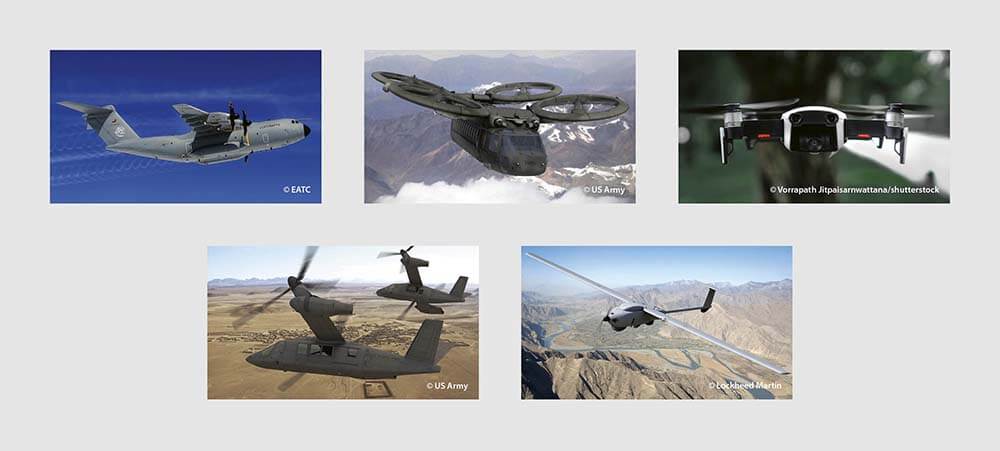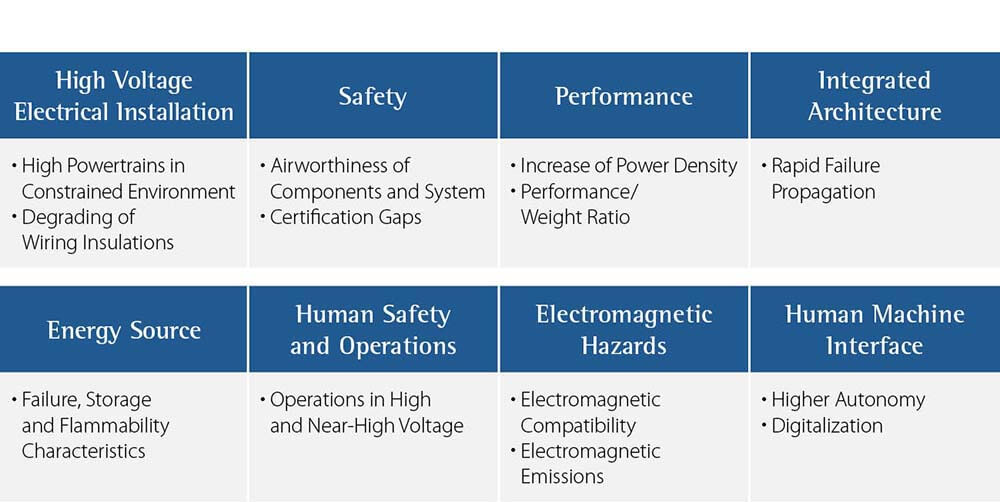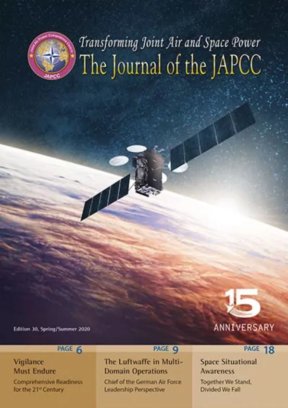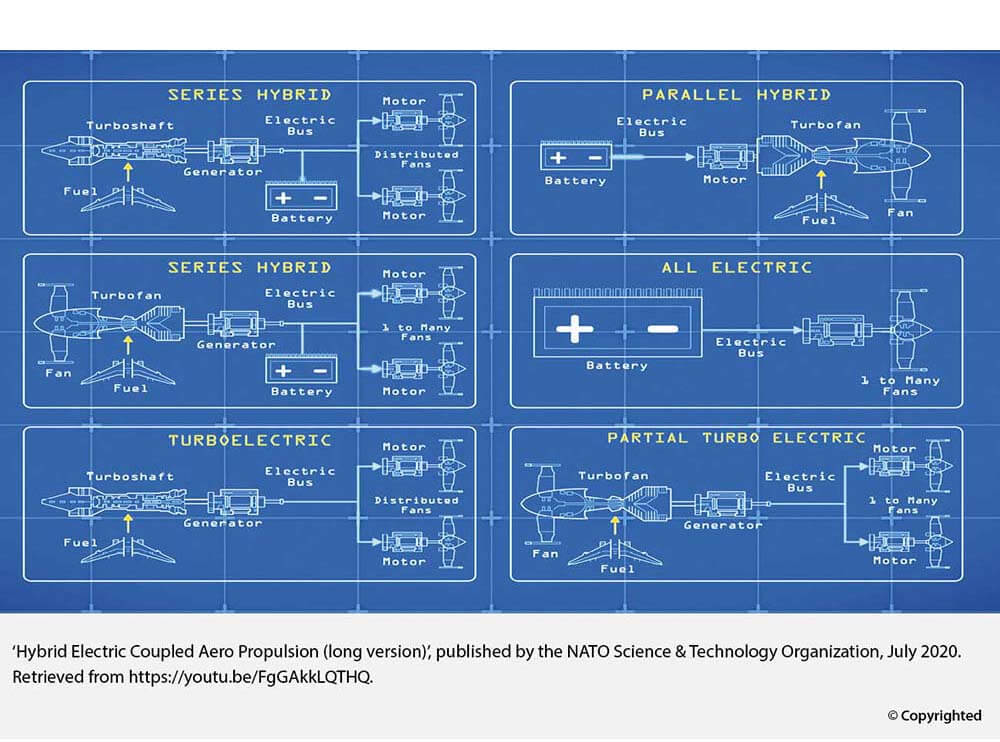Introduction
The use of electricity is part of the history of aviation from the very beginning. From the first electrically-powered airship in 1883 to an electric-powered helicopter used as a tethered air observation platform in 1917. Ever since those early days of aviation battery systems have been the limiting factor for sustained electrical flight. It took another fifty years for the first fully electrical flight of an aircraft to take place in 1973, quickly followed by the first flight of a manned aircraft powered by solar cells in 1979. Two decades later, the first certificate of airworthiness for an electric-powered aircraft was granted in 2003.1
In the meantime, a steadily increasing number of electric sub-systems and consumers across all air platforms, as well as a trend towards a more environmental friendly air travel, have resulted in a considerable number of projects and concepts in the field of hybrid/electric or electric aircraft leading to serious alternatives to conventional air-breathing engines.2 Notably, that development of alternative technology is not limited to civilian applications such as Urban Air Mobility or other commercial aircraft; military aircraft have always had a high demand for more electrification since the 1940s Boeing B-29 ‘Superfortress’ right through to the modern Lockheed Martin’s F-35.3
Far too often procurement programmes in aerospace and defence enterprises experience major delays or costs overruns related to design changes, supply chain issues, testing and manufacturing complexity.4 Some of those are caused by frequent changes of requirements over time or the misunderstanding of potential and risks emerging from novel technologies. Therefore, it should be an imperative to better understand and to determine the requirement trade-space between high-level capabilities down to the emerging technological opportunities that are feasible in the envisioned timeframe.
First and foremost, operational long-term requirements have to be aligned with doctrinal and strategical frameworks such as The Allied Joint Doctrine for Air and Space Operations and NATO’s Joint Air Power (JAP) Strategy. Those underpin ‘Speed, Reach and Height as the core principles of Air Power’5, while at the same time inherent limitations of Air Power ‘such as impermanence, payload limitations and relative vulnerability’6 need to be taken into consideration for the core roles defined by NATO’s JAP Strategy.7
One core role, Air Mobility, has to serve across the air, land and maritime domains ‘such functions include the deployment, sustainment, relocation, and recovery of military or civilian personnel and materiel’8. The recent shift in the security environment has made it indispensable to refocus and enforce nations’ capacities to project capabilities in a sustained manner. Consequently, modern capabilities and sufficient capacities of the Alliance need to be balanced between the reality of nations’ budget constraints and the challenges of the security of global supply chains.9
Generally, the future environment in which air mobility is expected to operate is extremely complex. Its requirement is not limited to state, non-state, military forces or terrorism, but is cross-cutting across all domains, while it continues to develop and evolve globally.10
Tactical Air Transport – Implications on Requirements
As part of Air Mobility, Air Transport (AT), and more specifically tactical Air Transport, is utilized by three types of assets – fixed-wing, rotary-wing and tilt-rotor.11 The importance of tactical AT capabilities to ground, amphibious, maritime as well as air manoeuvre warfare is widely recognized. In this respect, tactical AT adds speed and reach to a broad range of operations across all domains such as routine inter-theatre air-bridges or full-spectrum airborne operations.12
Despite a current tactical AT focus on the challenges of future operations in littoral Megacities, NATO’s Area of Operations ranges from the High North, through Eastern Europe to its South-Eastern borders. Correspondingly, missions will need to be carried out under ‘Cold & Wet’ to ‘Hot & High’ conditions including long-distance or endurance operations with the need for fast manoeuvre carrying as much cargo as possible.13
The aforementioned range of missions and environmental constraints will naturally have implications on current and future tactical AT platforms, which can be directly translated into speed, reach, height, impermanence, payload limitations and relative vulnerability of those assets. Furthermore tactical AT aircraft are required to operate with great exposure to the enemy threat and under constraints of limited logistic support as well as infrastructure. For fixed-wing missions this includes performance-limiting, austere landing strips,14 while rotary-wing and tilt-rotor operations are expected to begin and end on land or on sea with limited logistic support.15 In addition, typical missions of rotary-wing and tilt-rotor assets will include extensive hovering or quick entry and exit while dropping or picking up cargo.
For instance, air-breathing engine rotorcraft operations in ‘Hot & High’ environments with low-density air conditions face a number of constraints, including: reduced speed, limited height and reach, reduced payload capacity, and an increased vulnerability due to hampered manoeuvrability. Far too often, these individual elements sum up to poor performance causing injuries or deaths and the loss of the aircraft. Traditional technical means to increase performance are primarily limited to more engines and/or more powerful engines, increasing at least the logistic footprint of the individual aircraft, impeding the demands for ‘more operable, maintainable and reliable than existing designs.’16 It should be noted that, unlike in other mission areas, ‘the use of emerging technologies has not significantly influenced the next generation of [air] transport platforms’.17 Hence, further requirement trade-space analysis is needed to support well-informed decisions to overcome restrictions cause by a limited knowledge of the solution space providing alternative causes of actions.18

Future operational capability requirements for tactical AT are generally well documented and agreed upon by military experts. In contrast, potential technical solutions vary in their maturity and sometimes indicate little understanding of actual operational requirements, or none at all. They can impose high risks and costs associated with individual elements, which hamper national procurement processes. Ultimately, technologies have to benefit the identified key performance parameters of future tactical AT assets such as19, 20, 21
- High operational flexibility and availability, through increased freedom in design requirements (e.g. push rotors) and on-demand power augmentation and (temporally) reduced signatures such as noise or infrared.
- High useful loads and performances, especially by boosting abilities to mitigate most critical and performance-intensive flight manoeuvres (e.g. take-off, landing and hovering) or by generating fuel savings during cruising phases.
- High safety and security standards, by lowering vulnerabilities using distributed design considerations, and by reducing maintenance demanding mechanical sub-systems.
- Low Life Cycle Costs, by reducing the Maintenance, Repair and Overhaul (MRO) associated downtimes and costs of the whole system or its sub-systems.
- High reliability and endurance, by more robust design opportunities to meet the operational arena.
Amongst other organizational or technical means, hybrid/electric aero-propulsion technologies have the potential to provide a vital alternative to traditional solutions by enhancing the aforementioned key performance parameters.
Hybrid/Electric Aero-Propulsion – The Emerging Alternative
Electric devices have been revolutionizing the automotive industry for more than a decade. With every passing year cars become more electrified, utilizing electric systems to improve safety and comfort of driving and at present also to support or even replace standard Internal Combustion Engines (ICE). Electric Motors (EM) are used in regular cars to improve their economy and make them environmentally friendly, and in sports cars to improve their performance. Aviation is following a similar path as the automotive industry – increasingly using electric devices to replace pneumatic, hydraulic and mechanical systems. This is possible through the rapid evolution of electric components leading to more overall efficiency and higher-power densities, which makes them even more interesting for aviation purposes every year.
The impact of electric propulsion on aircraft design might be more favourable than initially expected. While directly replacing ICEs with electric motors could bring advantages of simplicity, reliability, reduced noise and maintenance costs, the far greater benefits may be achieved by exploiting the unique integration capabilities of the electric-propulsion systems within the airframe. Due to the relatively small size and low weight of the EMs, their ability to be scaled down without significant loss of efficiency and the relative ease of distribution of electric power within the aircraft (in comparison to the mechanical distribution of the power) is an advantage in itself.
All-Electric Aero-Propulsion
The use of the all-electric system seems to be the most obvious solution. It would not use ICE and would therefore not rely on fossil fuels or any fuel at all. It would use stored-electric energy instead. This kind of propulsion appears to be ideal from the operator point of view. It has no fuel consumption and its energy storage system can be charged at the airport from the grid. This kind of propulsion system would have a significantly reduced infrared signature and no emissions. Also, the noise would be reduced. The main source of the noise would be the fan or propeller, but there would be no component of noise from the core of a hot gas jet engine.
The maintenance cost of EMs would be lower than that of a turbine engine. However, there would be an additional cost of energy storage system maintenance, which in case of high-power density batteries may involve the necessity of frequent battery replacement, due to their limited life cycle.
In an all-electric system, there is no danger of hazardous engine flameout due to the fan stall or severe inclement weather (e.g. hail), and obviously there is also no danger of turbine disc burst during a fan-engine separation incident.
The biggest advantage of this concept, from the propulsion point of view, is its extremely high efficiency of conversion of stored energy into mechanical power. While a turbine engine is able to utilize about 50% of the energy contained in the fuel, the EM efficiency of energy conversion, including transfer losses, can be higher than 90%.
The biggest drawback of the all-electric system would be the energy storage. Currently available, state-of-the-art electric energy storage devices have low energy densities (energy stored per unit mass), which excludes them as storage means for large amounts of energy. For example batteries, which have the biggest energy densities among electric energy storage means, have energy densities more than 60 times lower than the kerosene (~12.5 kWh/kg). Battery technology advancement, which would increase energy density even by the factor of 10 is still insufficient to satisfy propulsion system power demands of a combat aircraft.

Hybrid/Electric Aero-Propulsion
The best option for using electric energy is to produce it when it is needed, without storing it. A perfect solution for that is to use a hybrid propulsion system, which merges a great energy conversion efficiency of the electric devices and the high-energy-density of the fuel that can be utilized by the ICE.
In this kind of architecture, part of the energy is stored in batteries and the other part in the fuel (most likely kerosene). In the ICE, the chemical energy of the kerosene is converted into mechanical energy at the shaft. A generator, driven by the shaft, converts the mechanical power and provides electricity. Electric power is distributed via transmission cables to all the customers which require electricity. An EM (one or few depending on architecture) drives the fan or propellers providing thrust.
In the hybrid propulsion system, the electric motor for the fan/propeller is decoupled from the ICE, and between both, electric devices are mounted, effectively acting like a gearbox with a variable ratio. Use of that ’electric transmission’ not only enables fan and turbine speeds to differ, it also makes it relatively easy to distribute power within the aircraft to multiple of such electric motors providing flexibility for a deeper aircraft-propulsion system integration. This provides a vast spectrum of potential architecture configurations which could be of use depending on the class of the vehicle and the mission profile.
Hybrid propulsion systems, just as all-electric systems, would suffer from low energy densities of batteries (and other energy storage devices). It is extremely important to properly consider during which stages of flight the batteries have to provide the desired output. During the other parts of the mission, when batteries are not used but their mass still needs to be carried, they will bring only losses. Determining those breakpoints will be crucial since the volume and weight of the platform have significant impact on the energy consumption and therefore overall efficiency of the system. Without including operational requirements the benefits that the previously discussed propulsion systems would provide might be jeopardized by reduced speed, reach, height or payload.
Enhancing the Requirement Trade-Space – A Conclusion
Some authors argue that technologies had no fundamental impact on airlift capabilities in the recent past.24 While that might hold for past developments, it might be different for the evolution towards more electric aircraft and even more towards the implementation of hybrid/electric aero-propulsion. Its specific potentials and developments have been exploited in the previous paragraphs linking the imperative of Air Power to tactical Air Transport including future high-level requirements.
Regardless of the future military environment or imaginable design concepts, the trend towards more electrical aircraft is obvious as can be seen in civil aircraft and the most modern combat aircraft. First, this is caused because legacy systems such as hydraulic and pneumatic components used for a number of important operations have often suffered from a lack of reliability and high maintenance costs.25 Second, the trend towards more digitalization (e.g. fly-by-wire) steadily improving handling performance and allowing weight saving. Third, an increased number of consumers such as modern multi-function radars, required computational power, electronic warfare systems and many more have made modern combat aircraft more and more demanding with regards to power consumption.
Hence, the electric infrastructure of aircraft will need to be adapted from kilowatt to multiple megawatt power transmission, including generating and storing electrical power. The required technologies of battery performance, battery safety/hazard containment, power electronics or safe and light high-voltage distribution are subject to many ongoing researches in nations and international collaborations such as NATO’s Applied Vehicle Technology (AVT) Panel. That allows national defence-related research to capitalize on a broad international network comprised of governmental agencies, industry stakeholders and academia.
Ultimately, hybrid/electric propulsion will broaden the requirement trade-space available to augment existing and enhance future air mobility capabilities:
Higher operational flexibility and availability could be achieved by mission-oriented performance adjustments of hybrid/electric engines in up-to real-time.
Higher useful loads and performances could be gained by temporarily augmented ICEs and an increased design flexibility utilizing the advantages of more distributed electric engines.
Higher safety and security standards would be achievable by small and distributed subsystems less dependent on mechanical components.
Low Life Cycle Costs can be enabled by reduced dependency on mechanical, hydraulic and pneumatic systems or subsystems.
Likewise, high reliability and endurance of future platforms would capitalize on the potential of hybrid/electric aero-propulsions to reduce dependency on traditional subsystems as well as to cut down the overall dependency on mechanical, hydraulic and pneumatic systems.
As technologies evolve, more electric aircraft including hybrid/electric aero-propulsion will probably not equally impact on all of the aforementioned key performance parameters. However, knowing the future requirement trade-space between operational requirements and technological advancements will lead to better-informed decisions. Those efforts are supported by NATO’s expert committees such as the AVT Panel sponsoring scientific and advisory work in that specific area of hybrid/electric aero-propulsion.














